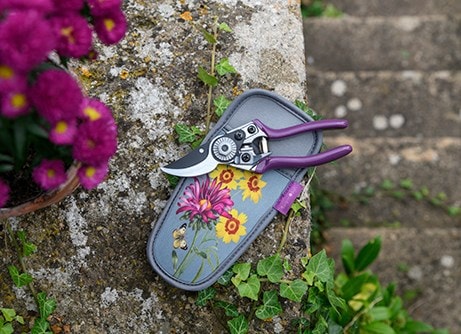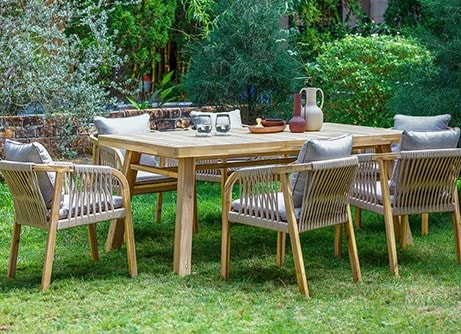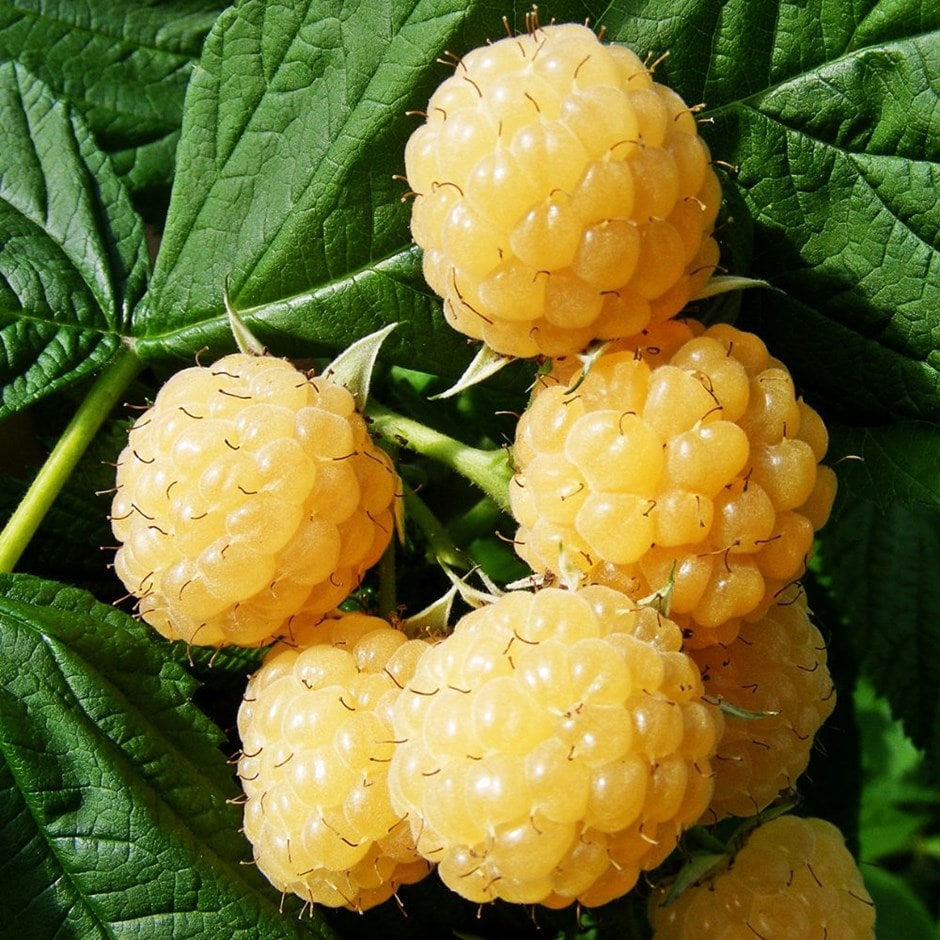A holder of the RHS 'Award of Garden Merit', this raspberry produces bright yellow fruit, that have a strong aroma and a wonderfully sweet flavour. As it is a primocane variety, and can produce fruit on the canes which have grown in the current season, it can produce two crops in one year - although the majority will be ready to harvest late in the season.
How to care for raspberry All Gold:
Find a sunny spot and prepare a bed by clearing it of weeds and digging in lots of composted manure. The canes will need to be tied onto a sturdy support, so if you have the space, hammer in two robust tree stakes about 3m apart and string two or three heavy-gauge wires between them. Autumn fruiting raspberries tend to be shorter and bushier, so may not need as much height as the summer-fruiting types. In smaller gardens you can grow them against a fence or up a single tree stake. Dig a wide, shallow trench, sprinkle with bonemeal and plant the canes at 45cm intervals, (subsequent rows should be 1.8m apart), carefully spreading out the roots and back-filling with soil. You should be able to see the old soil mark on the stems, so aim to replant the same depth. After planting cut the canes back to around 15cm from their base and apply a generous layer of mulch in spring. As the new canes emerge, they can be tied onto their support as they grow. Feed during the growing season with a general purpose fertiliser and water regularly during the summer. You may need to protect the ripening fruit from being eaten by birds. Cut back all the canes to just above ground level each February if you just want one crop of fruit in late summer and autumn. To grow as a primocane (ie producing two, smaller crops each year), cut back the new spring stems, which have produced fruit at their tips in autumn, to a point just below where the raspberries were produced, soon after they have finished cropping. These half-canes can then be left to overwinter, will put on new top growth in spring and will then go on to produce the first crop of berries in early summer. After these two year old canes have finished fruiting they should be cut right back to their base. In the meantime, new canes will have emerged from the base of the plant in spring and these should be tied onto their support as they grow. These new canes will then produce the second, later crop and should have their tops lopped off after fruiting. This then creates a repeating cycle.
Eventual height:
2m
Eventual spread:
1.8m
Soil:
Moderately fertile, moist, well-drained soil










